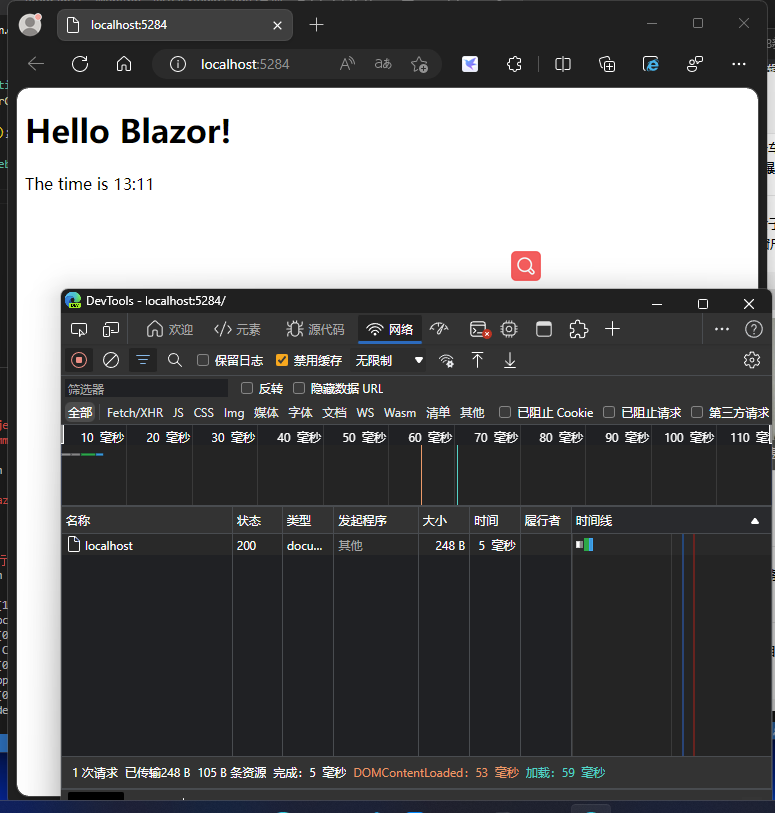摘要:
本文演示如何向有效用户提供jwt,以及如何在webapi中使用该token通过JwtBearerMiddleware中间件对用户进行身份认证。
认证和授权区别?
首先我们要弄清楚认证(Authentication)和授权(Authorization)的区别,以免混淆了。认证是确认的过程中你是谁,而授权围绕是你被允许做什么,即权限。显然,在确认允许用户做什么之前,你需要知道他们是谁,因此,在需要授权时,还必须以某种方式对用户进行身份验证。
什么是JWT?
根据维基百科的定义,JSON WEB Token(JWT),是一种基于JSON的、用于在网络上声明某种主张的令牌(token)。JWT通常由三部分组成:头信息(header),消息体(payload)和签名(signature)。
头信息指定了该JWT使用的签名算法:
header = '{"alg":"HS256","typ":"JWT"}'
HS256表示使用了HMAC-SHA256来生成签名。
消息体包含了JWT的意图:
payload = '{"loggedInAs":"admin","iat":1422779638}'//iat表示令牌生成的时间
未签名的令牌由base64url编码的头信息和消息体拼接而成(使用"."分隔),签名则通过私有的key计算而成:
key = 'secretkey' unsignedToken = encodeBase64(header) + '.' + encodeBase64(payload) signature = HMAC-SHA256(key, unsignedToken)
最后在未签名的令牌尾部拼接上base64url编码的签名(同样使用"."分隔)就是JWT了:
token = encodeBase64(header) + '.' + encodeBase64(payload) + '.' + encodeBase64(signature) # token看起来像这样: eyJhbGciOiJIUzI1NiIsInR5cCI6IkpXVCJ9.eyJsb2dnZWRJbkFzIjoiYWRtaW4iLCJpYXQiOjE0MjI3Nzk2Mzh9.gzSraSYS8EXBxLN_oWnFSRgCzcmJmMjLiuyu5CSpyHI
JWT常常被用作保护服务端的资源(resource),客户端通常将JWT通过HTTP的Authorization header发送给服务端,服务端使用自己保存的key计算、验证签名以判断该JWT是否可信:
Authorization: Bearer eyJhbGci*...<snip>...*yu5CSpyHI
准备工作
使用vs2019创建webapi项目,并且安装nuget包
Microsoft.AspNetCore.Authentication.JwtBearer

Startup类
ConfigureServices 添加认证服务
services.AddAuthentication(options =>
{
options.DefaultAuthenticateScheme = JwtBearerDefaults.AuthenticationScheme;
options.DefaultChallengeScheme = JwtBearerDefaults.AuthenticationScheme;
options.DefaultScheme = JwtBearerDefaults.AuthenticationScheme;
}).AddJwtBearer(options =>
{
options.SaveToken = true;
options.RequireHttpsMetadata = false;
options.TokenValidationParameters = new TokenValidationParameters()
{
ValidateIssuer = true,
ValidateAudience = true,
ValidAudience = "https://www.cnblogs.com/chengtian",
ValidIssuer = "https://www.cnblogs.com/chengtian",
IssuerSigningKey = new SymmetricSecurityKey(Encoding.UTF8.GetBytes("SecureKeySecureKeySecureKeySecureKeySecureKeySecureKey"))
};
});
Configure 配置认证中间件
app.UseAuthentication();//认证中间件、
创建一个token
添加一个登录model命名为LoginInput
public class LoginInput
{
public string Username { get; set; }
public string Password { get; set; }
}
添加一个认证控制器命名为AuthenticateController
[Route("api/[controller]")]
public class AuthenticateController : Controller
{
[HttpPost]
[Route("login")]
public IActionResult Login([FromBody]LoginInput input)
{
//从数据库验证用户名,密码
//验证通过 否则 返回Unauthorized
//创建claim
var authClaims = new[] {
new Claim(JwtRegisteredClaimNames.Sub,input.Username),
new Claim(JwtRegisteredClaimNames.Jti,Guid.NewGuid().ToString())
};
IdentityModelEventSource.ShowPII = true;
//签名秘钥 可以放到json文件中
var authSigningKey = new SymmetricSecurityKey(Encoding.UTF8.GetBytes("SecureKeySecureKeySecureKeySecureKeySecureKeySecureKey"));
var token = new JwtSecurityToken(
issuer: "https://www.cnblogs.com/chengtian",
audience: "https://www.cnblogs.com/chengtian",
expires: DateTime.Now.AddHours(2),
claims: authClaims,
signingCredentials: new SigningCredentials(authSigningKey, SecurityAlgorithms.HmacSha256)
);
//返回token和过期时间
return Ok(new
{
token = new JwtSecurityTokenHandler().WriteToken(token),
expiration = token.ValidTo
});
}
}
添加api资源
利用默认的控制器WeatherForecastController
- 添加个Authorize标签
- 路由调整为:[Route("api/[controller]")] 代码如下
[Authorize]
[ApiController]
[Route("api/[controller]")]
public class WeatherForecastController : ControllerBase
到此所有的代码都已经准好了,下面进行运行测试
运行项目
使用postman进行模拟
输入url:https://localhost:44364/api/weatherforecast

发现返回时401未认证,下面获取token
通过用户和密码获取token

如果我们的凭证正确,将会返回一个token和过期日期,然后利用该令牌进行访问
利用token进行请求

ok,最后发现请求状态200!
总结
以上就是这篇文章的全部内容了,希望本文的内容对大家的学习或者工作具有一定的参考学习价值,谢谢大家对阿兔在线工具的支持。



